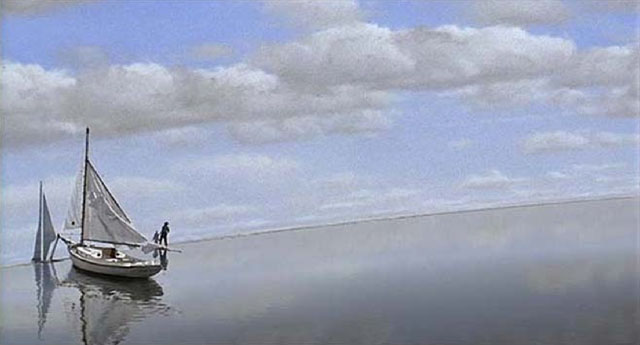Built Metaphors (Gated communities and fiction)
Article présenté à la 4e conférence internationale du réseau de recherche « Private urban governance & gated communities », La Sorbonne, 5-8 juin 2007.

Peter Weir, The Truman Show, 1998
Abstract
This paper examines the two-way interface between gated communities and fiction. We will look into fictions inspired by gated communities, and analyse gated communities themselves as fiction-derived environments.
The very principle of gated communities may have been invented by a social science fiction writer. It is novelistic per se, and automatically arouses imagination. Gated communities have inspired many science fiction writers and screenwriters, who used them as settings for a vast number of works. These include TV series (Michael Watkins’ X Files episode “Arcadia”), films (Peter Weir’s The Truman Show), TV films (The Sect), and novels (Neal Stephenson’s Snowcrash, Octavia Butler’s Parable of the Sower, James Graham Ballard’s Running Wild and Super-Cannes). In these stories, gated communities are used as “a metaphor for the state of the world at the beginning of the 21st century” (Sarah Blandy).
However, if gated communities are such a rich fictional environment, it is because their physical configurations embody narrative schemes that were present in western fiction long before they became ubiquitous in the real world. Before we heard of their existence, we were already subconsciously aware of their potential storylines.
Several archetypal stories can be considered. One is the “Noah’s ark” scenario: in a world that has turned crazy, a group builds a microcosm or a survival city to protect themselves. Very close to this scenario is the myth of the small groups of adventurers, settlers or astronauts who, in an uncountable number of stories, leave society to create a “paradise on earth” in the form of an isolated ideal community.
Another is the “Agatha Christie” scenario: a small group living in isolation develops a kind of collective madness, ending up murdering themselves . The Hollywoodian version of this story shows a too-perfect community that gradually degenerates as hidden secrets come to the surface. The inhabitants end up prisoners of their dream, as in Bryan Forbes’ The Stepford Wives, in which all women are changed into robots. There are also science fiction versions of the same scenario (Robert Silverberg’s The World Inside, George Romero’s Land of the Dead).
Finally, there is the “Metropolis” scenario, in which the poor and the rich (or the honest and the criminals) live in physically separated sections of the city, as in Fritz Lang’s movie, Paul Grimault’s Le Roi et l’Oiseau, or Carpenter’s Escape from New York.
The realisation of fictional storylines is a subject that deserves further study. Gated communities inhabitants cannot ignore (whether this knowledge is conscious or not) that they reproduce a fictional universe. They make these fictional fantasies and fears real, living in a built metaphor.
